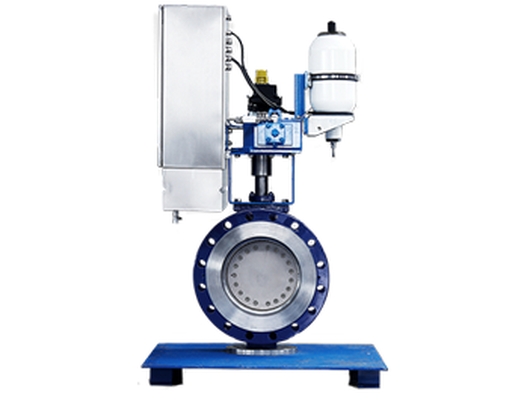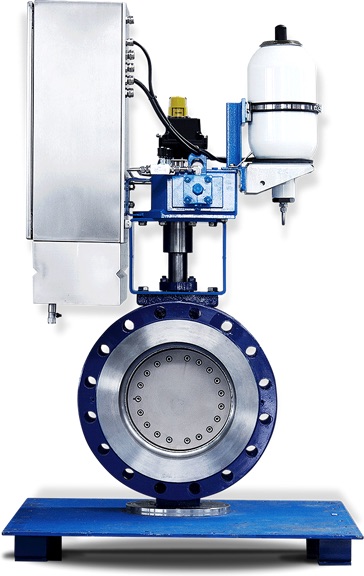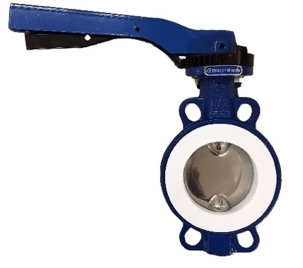
FAQs: Triple Offset Butterfly Valves Explained
Butterfly valves are quarter-turn valves used to stop, regulate and start flow. Amongst the various models available, triple offset butterfly valves offer unparalleled levels of bubble-tight shut-off in extreme applications. Operators can expect an extended service life, thanks to their minimal maintenance requirements. Here, BM Engineering Supplies answers all your frequently asked questions about triple eccentric butterfly valves.
What is a triple offset butterfly valve?
Triple offset butterfly valves, or triple eccentric butterfly valves, have three offsets. Two of these apply to the location of the shaft in relation to the centre line of the bore and the centre line of the seat sealing surfaces. The third offset is the design in the axis of the seat cone angle. Since coming to market more than 50 years ago, triple offset valves have continued to evolve, as have their applications across various industries.
How does a triple offset butterfly valve work?
The cone angle of a triple offset butterfly valve’s third offset, along with the two other eccentric shaft offsets, enables frictionless sealing of the disc against the seat. This seat design facilitates uniform sealing and an especially tight shut-off in metal seat designs. The result is a lower torque, better value alternative to other types of metal seated valves.
When to use a triple offset butterfly valve?
Originally intended for water shut-off applications, triple offset butterfly valves are now commonplace in extreme applications requiring bubble-tight shut-off, such as chemical processing. This is where the innovative design of a triple eccentric butterfly valve gives it a distinct advantage over other types of butterfly valves, particularly double offset butterfly valves.
What are the main triple offset butterfly valve advantages?
The main advantages of a triple offset butterfly valve are that conical sealing design, which results in repeatable sealing and a vastly extended valve life. Metal-to-Metal sealing ensures bubble tight shut-off, zero-leakage and compatibility with corrosive media. Friction-free stroking allows a lower torque-actuator to be used, extending the valve’s life. Plus, with no cavities between sealing components, operators can expect zero clogging and therefore minimal maintenance requirements.
What are the main triple offset butterfly valve disadvantages?
Triple offset butterfly valves negate some of the more common issues associated with traditional butterfly valves, such as their inability to handle slurry applications, a lack of bubble-tight shut-off and leak paths around the disc stem. They do, however, need to be removed from the piping for any internal repairs and are relatively expensive compared to some other types of valves. However, their long service life and low maintenance credentials make them a worthwhile investment.
What is the typical triple offset butterfly valve flow direction?
Triple offset butterfly valves have an arrow marked on the body to indicate a preferred flow direction, but can be used as bi-directional valves as long as the differential pressure is not high in the opposite direction to the arrow. As they work well as shut-off type valves, triple eccentric butterfly valves offer a viable alternative to gate and globe valves.
What is the difference between double and triple offset butterfly valves?
As the name suggests, double offset butterfly valves have two stems offset from the centre. A triple offset butterfly valve has three. Two of which are placed in a similar position to the double offset butterfly valve, while the third is the geometry of the seating surface. This creates a cone shape between the disc and seat. Triple offset valves are used in similar industries as double offset valves, except in more demanding applications. Double offset valves experience friction at the first 10° of opening and last 10° of closing. The third offset ensures the disc and seat are not in contact until the last 1° of closing, allowing virtually frictionless operation.
What are the benefits of a triple offset butterfly valve vs. ball valve?
Butterfly valves possess many advantages over ball valves, as well as gate, globe and plug valves. This is especially the case in large valve applications. Triple eccentric butterfly valves offer major advantages in terms of weight, space and lifetime costs. Maintenance costs are also generally lower due to the minimal number of moving parts.
Which triple offset butterfly valve manufacturers do you recommend?
BM Engineering Supplies has partnered with the most respected high-performance butterfly valve manufacturers in the industry. Triple offset butterfly valves from Zwick are used across a wide variety of industries, including oil and gas, chemical, petrochemical, energy, offshore and steel – wherever critical applications require reliable functionality and 100 per cent zero-leakage. SOMAS’ highly-regarded triple eccentric butterfly valves deliver virtually maintenance-free performance for extended periods of operation.
For more information about triple offset butterfly valves and our complete selection of butterfly valves at BM Engineering Supplies, contact us today on 0141 762 0657 or email sales@bmengineering.co.uk.



